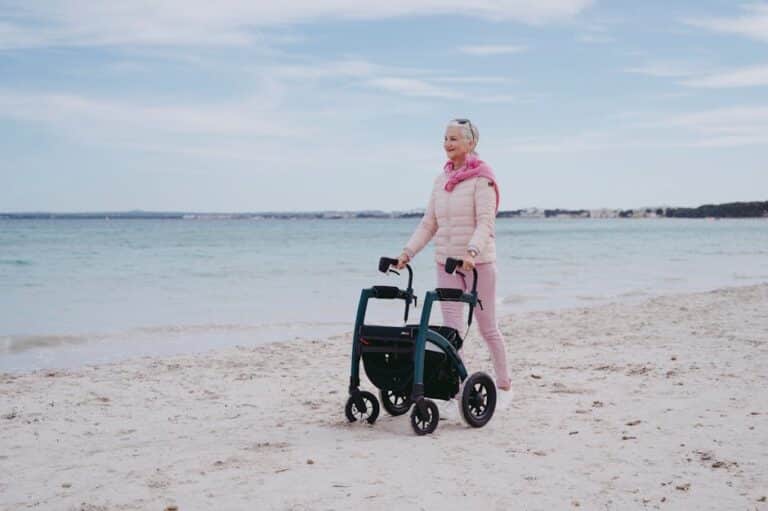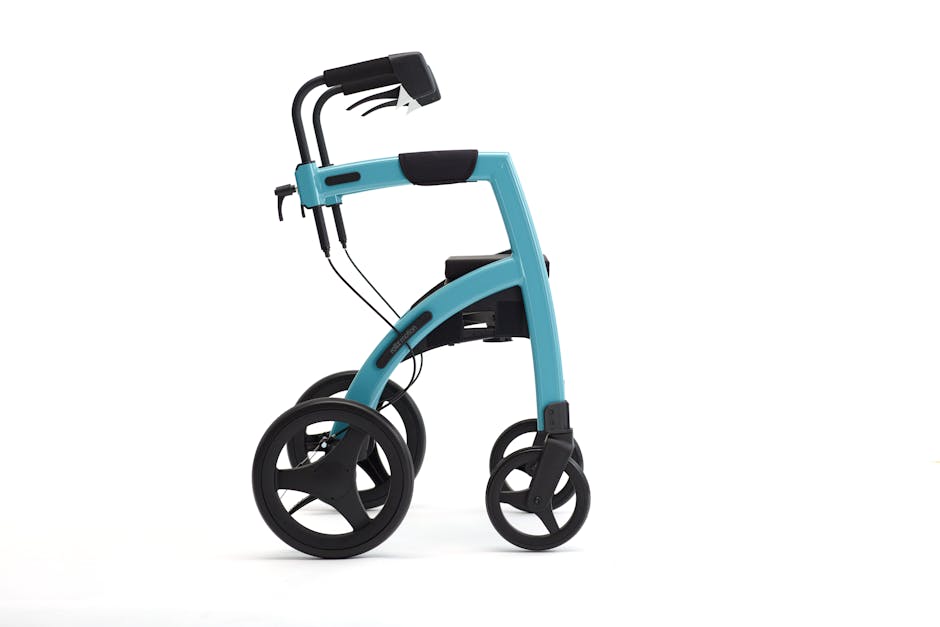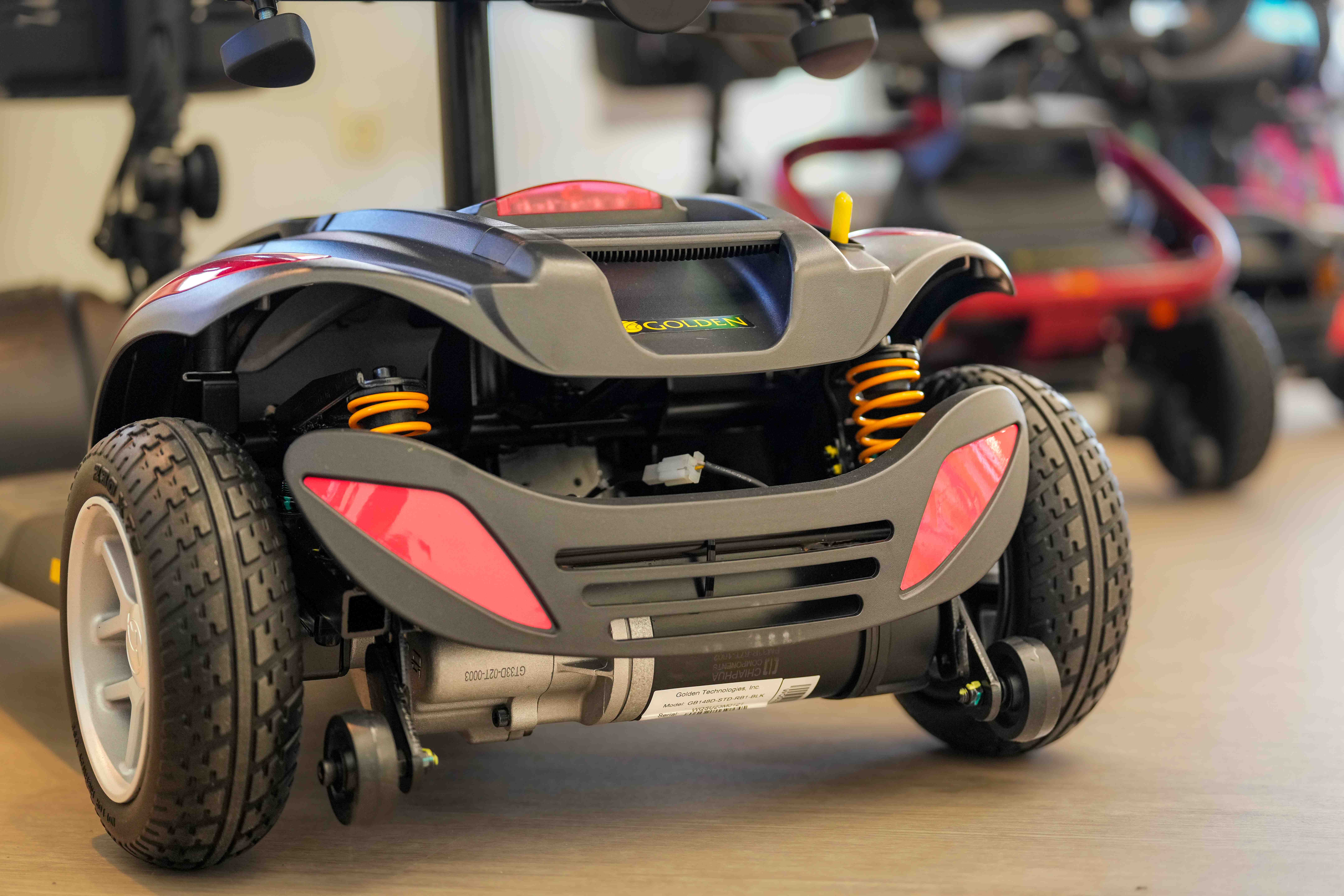423 E. Roosevelt Road, Lombard, IL 60148
630 895 8383

When it comes to maintaining mobility and independence, a walking aid can be a game-changer for elderly individuals or those with special needs. These tools are designed to offer stability and support, making walking safer and easier. Whether you need a simple cane or a more robust rollator, the right walking aid can significantly enhance your quality of life by providing the support you need to move confidently.
Types of Walking Aids:
Mobility aids are integral in preserving not just physical health but also mental peace of mind. They allow users to maintain an active lifestyle, reducing the risk of falls and injuries. Notably, as highlighted by experts, these devices are “integral in preserving dignity and quality of life as age progresses” (source). They provide both physical support and the confidence to move independently in various environments.

When it comes to walking aids, there’s a variety to choose from. Each type serves a specific need and helps improve mobility in different ways. Here’s a comprehensive list to help you understand your options:
Canes are the simplest form of walking aid, offering light support for those who have slight mobility issues but can mostly walk independently.
Walkers offer exceptional support and stability for users needing extra help with balance. They are ideal for those who can stand but need a sturdy device to prevent falls.
Rollators are essentially walkers with wheels and are best for individuals who can walk but need occasional support. They come in both three and four-wheeled models.

Crutches are designed to assist in the recovery from injuries by completely offloading the weight of one leg. They are ideal for temporary use, especially post-surgery or during rehabilitation from leg injuries.
Specialty Walkers include models like knee walkers or posture-support walkers. These are tailored for specific needs.

Each type of walking aid is designed to meet different mobility challenges. By understanding these options, you can choose the one that best fits your needs and enhances your quality of life.
Next, we will explore how to choose the right walking aid based on your specific needs and conditions.
Choosing the right walking aid is crucial for maintaining your independence and mobility. Here are some key factors to consider:
Before anything else, get a professional assessment. A physical therapist or mobility expert can evaluate your specific needs and recommend the best walking aid. They will consider your:
Mobility level plays a big role in choosing the right aid. Here’s how different aids match different mobility levels:
Your balance needs will determine the type of aid you require:
Consider how much weight you need the walking aid to support:
By considering these factors, you can choose a walking aid that best meets your needs. This will help you stay mobile and enjoy a better quality of life.
Next, we will look at the best walking aids for specific needs, such as weak legs or balance issues.
Choosing the right walking aid depends on your specific needs. Here, we’ll explore the best options for weak legs, balance, and speed.
Cane
A cane is great for those who need minimal support. It’s lightweight, easy to use, and perfect for individuals with slight mobility issues or those recovering from minor injuries. A cane should be held in the hand opposite the injured or weak leg. This helps distribute weight and provides stability.
Walker
For those with significantly weak legs, a walker offers more support. Walkers have a sturdy frame with four legs, providing a stable base. This is especially useful for older adults who need additional support to maintain balance and mobility within their homes.
Walker
A walker is one of the most stable walking aids. It’s ideal for individuals who need strong support to maintain balance. Walkers are lightweight and easy to maneuver, making them suitable for indoor use and short trips outside.
Rollator
A rollator is a walker with wheels, offering more mobility and ease of use. It’s best for individuals who have a good sense of balance but need support while walking. Rollators often come with a built-in seat, allowing users to rest when needed. This makes them perfect for longer outings, like trips to the grocery store or walks in the park.
Rollator
If speed and ease of use are your top priorities, a rollator is the best choice. Unlike traditional walkers, rollators don’t need to be lifted with each step. Instead, you simply push them forward. They come with brakes for safety and often feature storage baskets and seats for added convenience. This makes rollators ideal for longer distances and more active lifestyles.
By understanding your specific needs, you can choose the right walking aid to enhance your mobility and improve your quality of life.
Grip Techniques:
Hold the cane in the hand opposite to the injured or weaker leg. This helps maintain balance and reduces the load on the affected side. Ensure your grip is firm but comfortable, keeping your wrist in a natural position to avoid strain.
Stride Assistance:
Move the cane forward as you step with the weaker leg. This provides support and stability. With practice, this movement will feel natural, allowing you to walk longer distances comfortably.
Adjustment:
Adjust the walker to the appropriate height. The handles should align with the crease of your wrist when you stand upright with your arms at your sides. This ensures your elbows are slightly bent, providing optimal support and comfort.
Maneuvering:
Grip both handles firmly. Lift or push the walker forward a short distance, then step forward. Use the handles to support your weight as you walk. Always ensure all four legs of the walker are on the ground before taking a step.
Pro Tip: Never replace walker feet with tennis balls. Instead, use safe and sanitary walker slides.
Braking:
Rollators come with brakes to ensure safety. Familiarize yourself with the brake mechanism. Engage the brakes when you need to stop or sit down. This prevents the rollator from moving unexpectedly.
Adjusting:
Like walkers, rollators need to be adjusted to your height. The handles should align with your wrist crease, allowing a slight bend in your elbows. This ensures comfort and stability.
Maneuvering:
Grip the handles and push the rollator forward as you walk. Unlike walkers, there’s no need to lift a rollator. Use the swiveling front wheels to turn easily. When navigating obstacles, push down on the handles to lift the front wheels over the hurdle.
Pro Tip: Rollators often come with a seat for resting. Use this feature if you become fatigued during your walk.
By mastering these techniques, you can use your walking aid safely and effectively, enhancing your mobility and confidence.
The best device to assist in walking depends on your specific needs. Walkers are ideal for individuals who need substantial support and stability. They are lightweight and easy to maneuver, making them perfect for indoor use and short distances. Rollators are great for those who need both support and the ability to rest frequently, as they come with built-in seats. They are also easier to push and navigate because of their wheels.
A walking aid improves your walking pattern, balance, and safety. By providing additional points of contact with the ground, these aids enhance stability and reduce the risk of falls. They also help distribute weight more evenly, which can alleviate pain and reduce the load on weaker limbs. This makes it easier and safer to move around, whether you’re recovering from an injury or dealing with age-related mobility issues.
For elderly individuals, rollators and walkers with seats are often the best choices. Rollators provide excellent balance and support, and their built-in seats offer a convenient place to rest. This is particularly useful for seniors who may get tired easily. Walkers with seats also offer stability and a resting option, making them a versatile choice for maintaining independence and safety.
Whether you need minimal support or substantial assistance, there’s a walking aid designed to meet your needs.
At Monty’s Home Medical, we understand that selecting the right walking aid can be daunting. That’s why we focus on providing personalized service and expert guidance to help you make the best choice for your mobility needs.
Personalized Service: We believe that every person’s mobility challenges are unique. Our dedicated team takes the time to listen to your specific needs and preferences. Whether you’re in search of a simple cane or a more complex rollator, our goal is to offer options that enhance your independence and improve your quality of life. Explore our comprehensive range of mobility aids to find the perfect fit.
Expert Guidance: Our experts are well-versed in the latest advancements in mobility technology. We’re not just knowledgeable about our products; we specialize in understanding the needs of those requiring mobility aids. From choosing the right device to mastering its use, our team is here to support you every step of the way.
Choosing Monty’s Home Medical means opting for a partner who stands by you as you navigate the challenges of reduced mobility. Our commitment to quality and customer satisfaction is reflected in everything we do, from the careful selection of products to our compassionate customer service. We aim to ensure that you live a more independent, safe, and fulfilled life.
By selecting Monty’s Home Medical, you’re not just purchasing a mobility aid; you’re gaining a partner dedicated to enhancing your freedom and quality of life. Let us guide you to better mobility and enhanced independence. Visit our store today and take the first step towards a more mobile and independent future.